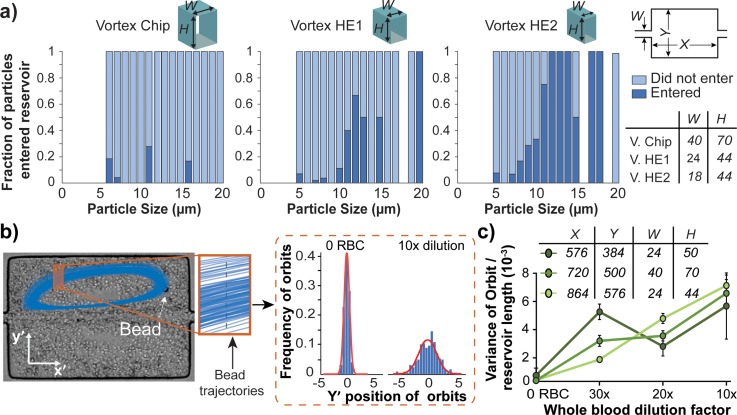FIG. 2.
Particle entry and orbit perturbation analysis. (a) Size distribution of particle entry depends on entry channel dimensions. The fraction of particles that enter the reservoir is the ratio between the number of particles of a particular size that entered the reservoir and the total number of particles of that size that were observed in the entry channel (dark blue bars). The light blue bars are the fraction of particles that did not enter the reservoirs. Blank spaces indicate no particles of that size was present. The size distribution and total number of particles entering into the system remained comparable between conditions (Fig. S3).29 N = 6 reservoirs were used for each device. (b) Histograms of the points of intersection of a trajectory with one x position are shown. This is used to calculate a variance in intersection position, which quantifies the perturbation of the trajectory from a single consistent trajectory (most stable particles having a variance of 0). (c) Orbit variance analysis for 20 μm beads in PBS and 3 dilutions of blood, for N = 5 reservoirs.

